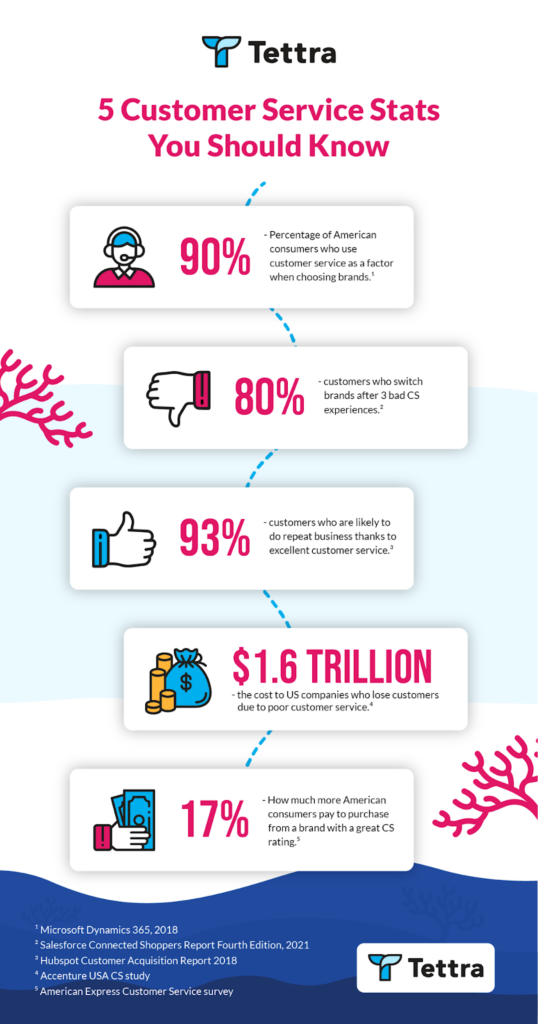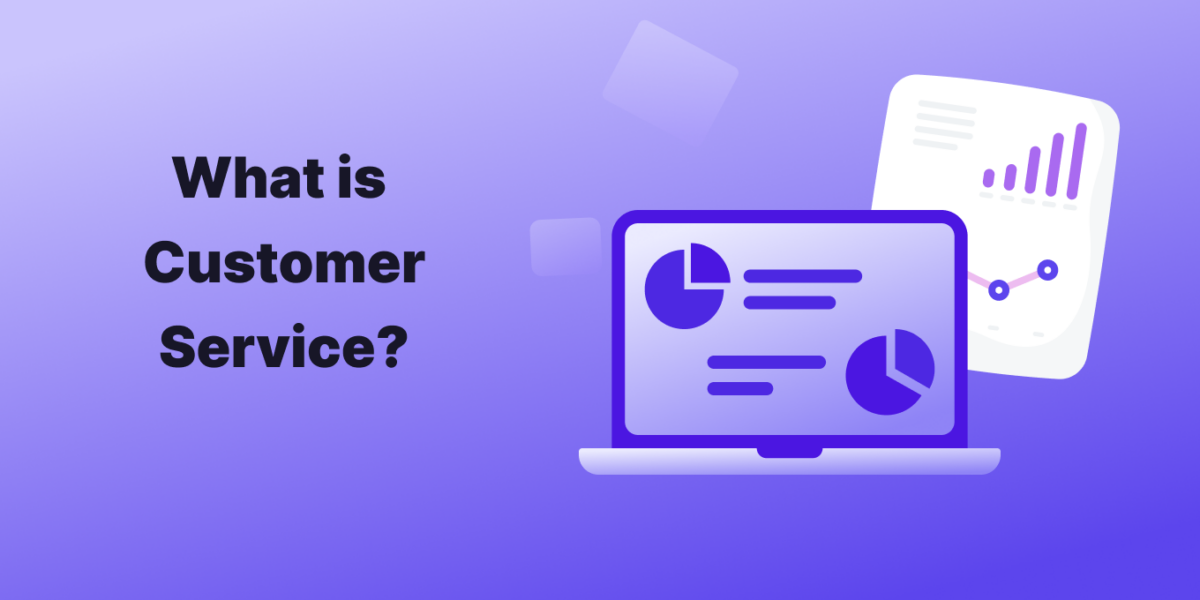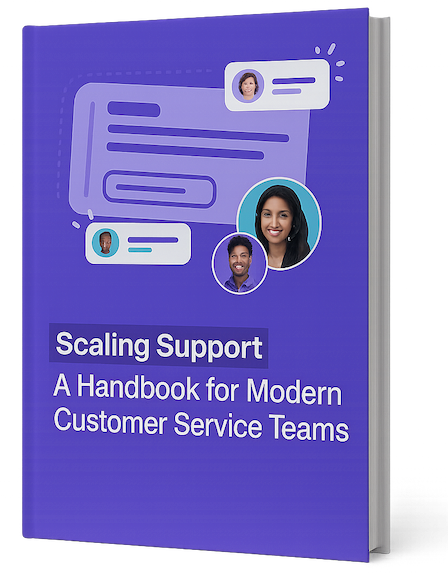The digital landscape has undergone a major change since the arrival of COVID-19. Customer expectations have grown, particularly when it comes to support, its availability, and the quality of the customer experience.
According to surveys done by Khoros, 65% of customers switch to a different brand because of a poor experience, while 83% cited good customer service as their most important criterion for deciding where to buy.
⭐️ Recommended: Essential customer service tips for business success
Customer service, when done well, has as much impact as a strong sales funnel or excellent marketing efforts. Not only that, if your customer service team does a fantastic job, it can greatly boost your customer success rate.
Exceptional customer service examples can inspire and guide your team in delivering top-notch support. These real-life instances of outstanding service can showcase the positive outcomes of prioritizing customer satisfaction.
In this article, we explore what customer service is, why it is important, and highlight the key customer service principles and skills required to run a successful customer service department.
What is Customer Service?
Customer service refers to the support you provide to customers, both before and after they purchase your products or services. While often confused with aftersales support, the updated definition of customer service actually includes the pre-purchase process. Customer service includes:
- Answering inquiries about the product, brand, or delivery
- Helping customers through the buying process
- Addressing post-purchase issues or concerns
- Responding to customer feedback on customer support channels
As you can see, customer service involves more than just resolving issues. In today’s competitive environment, customer service now means providing fast and solid support to customers across a variety of channels.
- Learn more about customer support enablement and how Tettra helps
Why is Customer Service Important?
Beyond the quality of product or service, customer service is one the key aspects that define a brand. Good customer service can:
- Influence a customer’s decision whether to purchase from you or from another brand
- Help the conversion process
- Increase customer retention, or the ability to retain a customer over a specific period
- Boost the chances of repeat business
- Increase a customer’s lifetime value, or how much they spend with your brand over their lifetime
- Enhance brand reputation. Some companies actually bank on their legendary customer service, such as Amazon and Zappos
- Turn customers into brand advocates
- Improve the chances of word of mouth marketing, thereby lowering your advertising costs
Conversely, bad customer service can:
- Exacerbate customer churn rate
- Lead to a negative brand rep
- Turn away customers during the purchase process due to unsatisfactory answers or slow service
- Cause negative reviews, which can greatly impact online sales
- Require more advertising spend to offset negative perception, and to continually attract new customers instead of retaining them.
What are Customer Service Channels?
Customer service channels refers to the platforms that customers can use to ask for customer support. In the old days, customer service was limited to hotlines. Today, it encompasses different channels:
- Traditional toll-free landline (hotline)
- Mobile number (popular with developing countries, where more people own mobile phones than landlines)
- Text messaging
- Social media brand pages
- Chatbot
- Live chat with human agents
- Customer knowledge base
The Importance of Customer Service: By the Numbers

80% of customers say that customer service is just as important as a company’s products or services.
In the retail industry, as much as 80% of consumers abandon a brand after three negative customer service experiences, based on a Salesforce survey.
A Zendesk survey echoed the Salesforce result, with 76% of consumers saying they would move to a competitor after more than one bad customer service experience.
A Microsoft survey found that 90% of Americans use customer service as a factor in deciding whether or not to do business with a brand. The same survey shows that 58% of customers will switch companies due to poor customer service.
An astonishing 93% of customers are likely to do repeat business with businesses that provide excellent customer service, based on Hubspot’s customer acquisition study.
Nearly 95% of customers who give a brand a “very good” CX rating are likely to recommend it to friends and family.
5 Factors That Greatly Impact Customer Service
1. Channel availability
The ease by which a customer can seek help is a critical factor of customer service. In today’s digitally interconnected world, most businesses employ at least 2-3 support channels.
To improve customer service, a brand should cater to the three main avenues: voice, chat, and messaging.
Voice
- Toll-free landline
- Mobile number (for those without landlines)
- VOIP
Chat
- Chatbot, useful for filtering concerns by type and severity
- Live chat agent
Messaging
- Social media page IMs and DMs
- Comments on social media posts
Self-help portal
- Chatbot, helps by solving the issue through a Q&A process
- Customer knowledge base, useful for people who prefer less human interaction and want to solve minor problems or inquiries. A Hubspot study found that most customers prefer knowledge bases over all other self-service channels.
2. Response time
The ability to respond quickly and efficiently to customer inquiries or concerns has a massive impact on customer service rating. These include:
How fast the brand responds – usually resolved by hiring more agents, or being more attentive to posts or feedback online
The effectiveness of the response – this is where training and competence come in. An internal knowledge base also helps agents provide efficient and accurate solutions.
For smaller businesses, a chatbot or customer self-help portal can boost the response time. Chatbots reply instantly, while a customer knowledge base requires no response and provides the customers with all the answers they need.
3. Proactiveness
In the age of social media, many concerns can fall through the cracks.
Some customers post their concerns as a comment on a social media post, while others simply post it on their own profile calling out the brand. One survey found that up to 33% of consumers would rather contact a company’s customer service via social media rather than by phone. Less savvy social media users often post their concerns on their own walls, or as a comment or reply to brand posts.
Good customer service means being proactive and being able to actively detect and respond to such concerns, outside of the traditional channels. This can be done by searching for keywords, hashtags and @ callouts of your brand. This is critical because such feedback is usually public, and can affect brand reputation.
4. Personalized service
A personal touch can go a long way toward turning an angry customer into a reasonable one. It also increases customer satisfaction at the end of the interaction.
Personalized customer service includes:
- Addressing them by their name
- Being aware of their customer journey
- Being able to recognize loyal customers
- Providing a feedback form
- Doing a follow-up check to ensure the issue was resolved
5. Empathy
Most customer service interactions typically stem from a problem or issue on the customer’s side. As such, callers tend to be typically unhappy, frustrated or downright hostile.
The ability to project empathy and handle criticism is an essential part of customer service. All team members must possess the right customer service skills to ensure that interactions are handled professionally, courteously and satisfactorily. Proper CS skills can help turn the most belligerent customer into a satisfied one, and hopefully increase the chances of repeat business.
How to Measure Customer Service
Customer service rating is a key pillar of customer analytics. Here is a basic list metrics you can use.
For more detail, check out this full list and explanation of customer service metrics.
Average response time
This measures the time between when a customer reaches out and when an agent responds to it. These can range from minutes for calls and chat, or hours for email or messaging. Regardless of the medium, the shorter the response time, the better.
Customer churn rate
Attrition is a critical KPI. In customer service, you can identify which customers interacted with your CS team, and which ones were retained or lost.
First call resolution rate
This is how many interactions it took to resolve the issue. Ideally, all concerns are resolved in the first call or interaction. More interactions can indicate a serious product issue that should be looked into. It can also be an indicator of the competence of agents.
Customer satisfaction
This measures how easy it was for customers to get what they wanted from your company, and their level of satisfaction with the outcome. This is usually determined from feedback forms and post-CS surveys.
Use Tettra to access relevant info & help your customers be successful
If you’re not seeing a path towards making this your reality, there’s an easy solution: using your internal knowledge base to fill in the gaps.
By leveraging Tettra as your internal knowledge base, anyone across your company — even beyond customer support and customer success — can easily access relevant information and help customers be more successful.
Building a customer experience organization that drives growth for your business isn’t simple, but with Tettra, it’s way easier.


